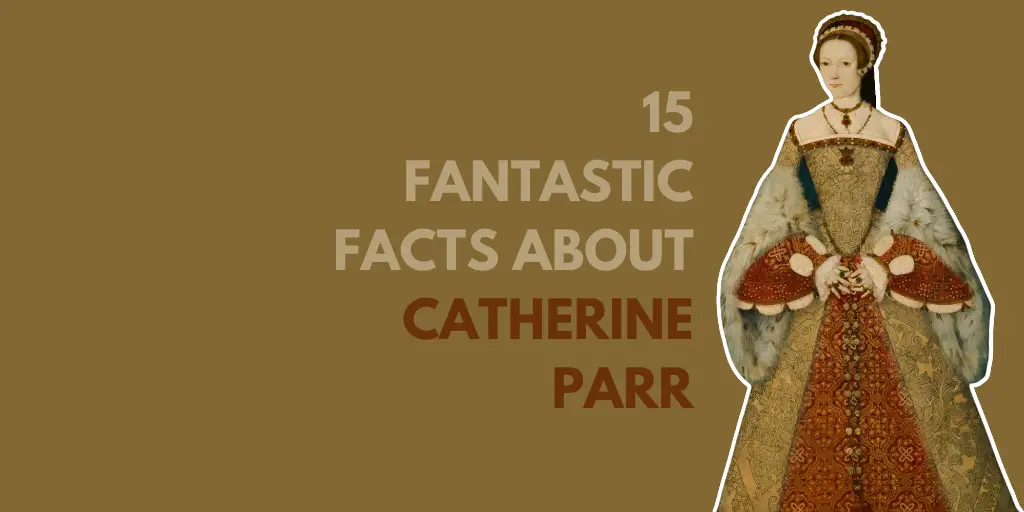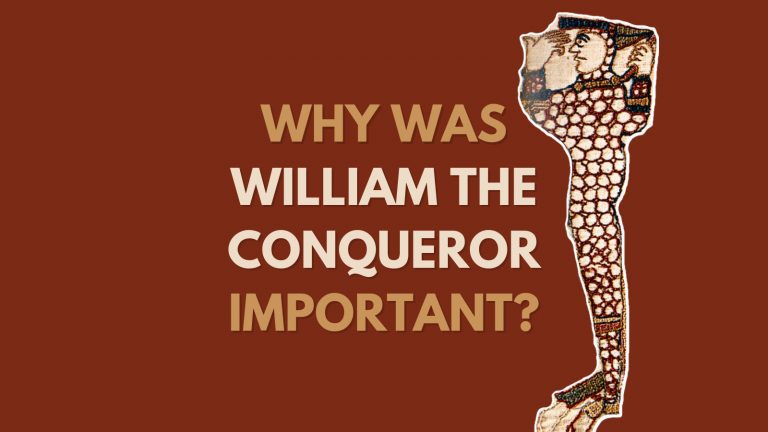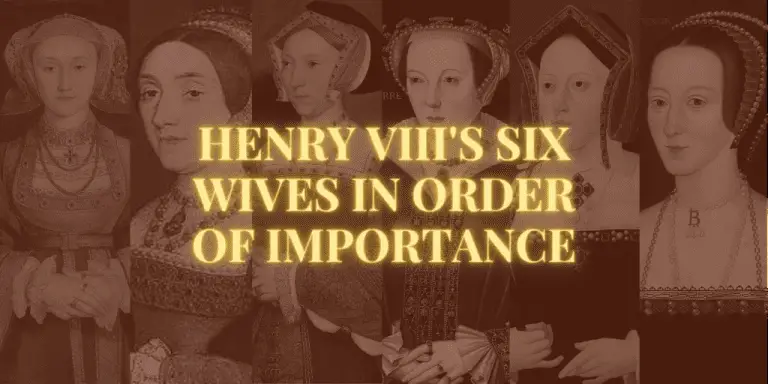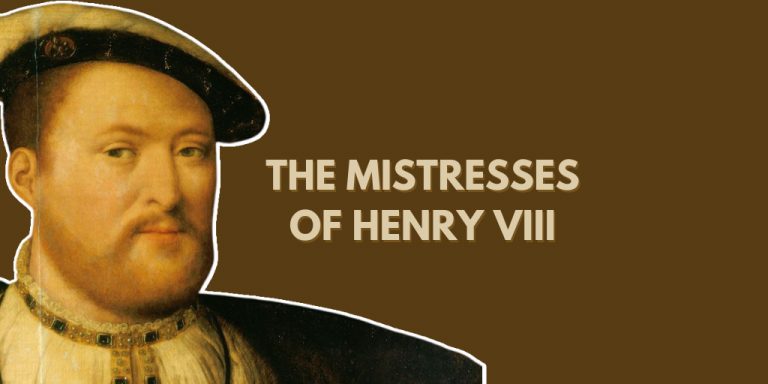15 Fantastic Facts about Catherine Parr
Catherine Parr was vivacious, attractive, and a scholar. She was King Henry VIII’s sixth and last wife.
Catherine Parr and Henry were married on the 12th of July 1543, at Hampton Court, with eighteen wedding guests as witnesses. She was the only one of his six wives to survive him, and he died less than four years into their marriage on the 28th of January 1547.
Catherine was a remarkable woman in many aspects; here are some amazing facts about her.
[/et_pb_text][/et_pb_column][/et_pb_row][et_pb_row _builder_version=”4.7.7″ _module_preset=”default”][et_pb_column type=”4_4″ _builder_version=”4.7.7″ _module_preset=”default”][et_pb_text _builder_version=”4.7.7″ _module_preset=”default”]1. Catherine Parr was married four times
[/et_pb_text][/et_pb_column][/et_pb_row][et_pb_row _builder_version=”4.7.7″ _module_preset=”default” column_structure=”1_5,3_5,1_5″][et_pb_column _builder_version=”4.7.7″ _module_preset=”default” type=”1_5″][/et_pb_column][et_pb_column _builder_version=”4.7.7″ _module_preset=”default” type=”3_5″][et_pb_image src=”http://historywithhenry.com/wp-content/uploads/2021/12/1-Catherine-Parr-was-married-four-times.-1.jpg” _builder_version=”4.7.7″ _module_preset=”default” alt=”Facts about Catherine Parr” title_text=”1 Catherine Parr was married four times.” hover_enabled=”0″ sticky_enabled=”0″][/et_pb_image][/et_pb_column][et_pb_column _builder_version=”4.7.7″ _module_preset=”default” type=”1_5″][/et_pb_column][/et_pb_row][et_pb_row _builder_version=”4.7.7″ _module_preset=”default”][et_pb_column type=”4_4″ _builder_version=”4.7.7″ _module_preset=”default”][et_pb_text _builder_version=”4.7.7″ _module_preset=”default”]Catherine married for the first time in 1529 at the age of seventeen. Her husband was Sir Edward Borough, son of Thomas Borough and chamberlain to Queen Anne Boleyn. He died in 1533 due to ill health without producing any children with Catherine.
A year into her widowhood, she was married to the forty-one-year-old John Neville. He was titled the third Baron Latimer, had been married twice before, and was father to two young children. He left Catherine again widowed on the 2nd of March 1543, again without having produced children from the union. It was then that she took up her position in Princess Mary’s household.
Had Catherine not met Henry due to her standing in Princess Mary’s household, all indications were that she would have married Thomas Seymour. Catherine was a mature thirty years of age when they were wed. By all accounts, she was a perfect wife for an aged king in poor health, more in need of a nurse than yet another spouse.
She and her beloved Sir Thomas Seymour eventually married in secret, barely four months after burying Henry. Thomas was brother to Jane Seymour, Catherine’s predecessor as queen, and uncle to King Edward VI. This wedding in May 1547 would be Catherine’s last and the only one to produce a child. Just six days after her daughter Mary’s birth, Catherine died at Sudeley Castle on the 5th of September 1548.
[/et_pb_text][/et_pb_column][/et_pb_row][et_pb_row _builder_version=”4.7.7″ _module_preset=”default”][et_pb_column type=”4_4″ _builder_version=”4.7.7″ _module_preset=”default”][et_pb_video src=”https://www.youtube.com/watch?v=4d0ouUt3eb0″ _builder_version=”4.7.7″ _module_preset=”default”][/et_pb_video][/et_pb_column][/et_pb_row][et_pb_row _builder_version=”4.7.7″ _module_preset=”default”][et_pb_column type=”4_4″ _builder_version=”4.7.7″ _module_preset=”default”][et_pb_text _builder_version=”4.7.7″ _module_preset=”default”]2. She was named after Catherine of Aragon
[/et_pb_text][/et_pb_column][/et_pb_row][et_pb_row _builder_version=”4.7.7″ _module_preset=”default” column_structure=”1_5,3_5,1_5″][et_pb_column type=”1_5″ _builder_version=”4.7.7″ _module_preset=”default”][/et_pb_column][et_pb_column type=”3_5″ _builder_version=”4.7.7″ _module_preset=”default”][et_pb_image src=”http://historywithhenry.com/wp-content/uploads/2021/12/2.-She-was-named-after-Catherine-of-Aragon.png” _builder_version=”4.7.7″ _module_preset=”default” alt=”Facts about Catherine Parr” title_text=”2. She was named after Catherine of Aragon” hover_enabled=”0″ sticky_enabled=”0″][/et_pb_image][/et_pb_column][et_pb_column type=”1_5″ _builder_version=”4.7.7″ _module_preset=”default”][/et_pb_column][/et_pb_row][et_pb_row _builder_version=”4.7.7″ _module_preset=”default”][et_pb_column type=”4_4″ _builder_version=”4.7.7″ _module_preset=”default”][et_pb_text _builder_version=”4.7.7″ _module_preset=”default”]Catherine’s mother worked in Catherine of Aragon’s household and was furthermore a close friend of hers. We should not be surprised that she decided to name her daughter after the queen. Not only did King Henry’s first and last wife share a common name, but Catherine of Aragon was also the young Catherine’s godmother.
[/et_pb_text][/et_pb_column][/et_pb_row][et_pb_row _builder_version=”4.7.7″ _module_preset=”default”][et_pb_column type=”4_4″ _builder_version=”4.7.7″ _module_preset=”default”][et_pb_text _builder_version=”4.7.7″ _module_preset=”default”]3. Catherine Parr was the most powerful female influence in Elizabeth’s life
[/et_pb_text][/et_pb_column][/et_pb_row][et_pb_row _builder_version=”4.7.7″ _module_preset=”default” column_structure=”1_5,3_5,1_5″][et_pb_column _builder_version=”4.7.7″ _module_preset=”default” type=”1_5″][/et_pb_column][et_pb_column _builder_version=”4.7.7″ _module_preset=”default” type=”3_5″][et_pb_image src=”http://historywithhenry.com/wp-content/uploads/2021/12/3-Catherine-Parr-was-the-most-powerful-female-influence-in-Elizabeths-life..png” _builder_version=”4.7.7″ _module_preset=”default” alt=”Facts about Catherine Parr” title_text=”3 Catherine Parr was the most powerful female influence in Elizabeth’s life.” hover_enabled=”0″ sticky_enabled=”0″][/et_pb_image][/et_pb_column][et_pb_column _builder_version=”4.7.7″ _module_preset=”default” type=”1_5″][/et_pb_column][/et_pb_row][et_pb_row _builder_version=”4.7.7″ _module_preset=”default”][et_pb_column type=”4_4″ _builder_version=”4.7.7″ _module_preset=”default”][et_pb_text _builder_version=”4.7.7″ _module_preset=”default”]King Henry’s daughter with Anne Boleyn, Elizabeth, had her stepmother, Catherine Parr, influence her more than any woman in her life. In fact, Catherine saw that father and daughter were once again in contact after a notable hiatus in their relationship.
She held a remarkable influence over the girl’s education, cultivating an already inherent intellect into what would prove to be the impressive bearing of a potentate. They conducted persuasive correspondence in the time while Elizabeth was expelled from court and throughout Catherine’s regency. In fact, Elizabeth’s early life was remarkably influenced by Catherine in many central aspects. Not least of which would have been her achievements as regent, her strength of character and dignity, and her religious convictions.
[/et_pb_text][/et_pb_column][/et_pb_row][et_pb_row _builder_version=”4.7.7″ _module_preset=”default”][et_pb_column type=”4_4″ _builder_version=”4.7.7″ _module_preset=”default”][et_pb_text _builder_version=”4.7.7″ _module_preset=”default”]4. Lady Jane Grey lived in Catherine’s household
[/et_pb_text][/et_pb_column][/et_pb_row][et_pb_row _builder_version=”4.7.7″ _module_preset=”default” column_structure=”1_5,3_5,1_5″][et_pb_column type=”1_5″ _builder_version=”4.7.7″ _module_preset=”default”][/et_pb_column][et_pb_column type=”3_5″ _builder_version=”4.7.7″ _module_preset=”default”][et_pb_image src=”http://historywithhenry.com/wp-content/uploads/2021/12/4-Lady-Jane-Grey-lived-in-Catherines-household..jpg” _builder_version=”4.7.7″ _module_preset=”default” alt=”Facts about Catherine Parr” title_text=”4 Lady Jane Grey lived in Catherine’s household.” hover_enabled=”0″ sticky_enabled=”0″][/et_pb_image][/et_pb_column][et_pb_column type=”1_5″ _builder_version=”4.7.7″ _module_preset=”default”][/et_pb_column][/et_pb_row][et_pb_row _builder_version=”4.7.7″ _module_preset=”default”][et_pb_column type=”4_4″ _builder_version=”4.7.7″ _module_preset=”default”][et_pb_text _builder_version=”4.7.7″ _module_preset=”default”]Mary, King Henry VIII’s youngest sister, had a daughter, Lady Frances Brandon, who was mother to Jane. Jane was proficient in French, Hebrew, and Italian and spoke and wrote Greek and Latin at an early age. This was largely thanks to her excellent tutorship. At the age of nine, she took up residence in the household of Queen Catherine Parr together with her cousin, Lady Elizabeth. She became a ward of the widowed Thomas Seymour when Catherine died.
Jane Grey would be remembered as the nine-day queen.
[/et_pb_text][/et_pb_column][/et_pb_row][et_pb_row _builder_version=”4.7.7″ _module_preset=”default”][et_pb_column type=”4_4″ _builder_version=”4.7.7″ _module_preset=”default”][et_pb_text _builder_version=”4.7.7″ _module_preset=”default”]5. Henry VIII drew up Catherine’s arrest warrant
[/et_pb_text][/et_pb_column][/et_pb_row][et_pb_row _builder_version=”4.7.7″ _module_preset=”default” column_structure=”1_5,3_5,1_5″][et_pb_column _builder_version=”4.7.7″ _module_preset=”default” type=”1_5″][/et_pb_column][et_pb_column _builder_version=”4.7.7″ _module_preset=”default” type=”3_5″][et_pb_image src=”http://historywithhenry.com/wp-content/uploads/2021/12/5-Henry-VIII-drew-up-Catherines-arrest-warrant-1.jpg” _builder_version=”4.7.7″ _module_preset=”default” alt=”Facts about Catherine Parr” title_text=”5 Henry VIII drew up Catherine’s arrest warrant” hover_enabled=”0″ sticky_enabled=”0″][/et_pb_image][/et_pb_column][et_pb_column _builder_version=”4.7.7″ _module_preset=”default” type=”1_5″][/et_pb_column][/et_pb_row][et_pb_row _builder_version=”4.7.7″ _module_preset=”default”][et_pb_column type=”4_4″ _builder_version=”4.7.7″ _module_preset=”default”][et_pb_text _builder_version=”4.7.7″ _module_preset=”default”]6. Catherine Parr was the first woman in England to publish a book under her own name
[/et_pb_text][/et_pb_column][/et_pb_row][et_pb_row _builder_version=”4.7.7″ _module_preset=”default” column_structure=”1_5,3_5,1_5″][et_pb_column _builder_version=”4.7.7″ _module_preset=”default” type=”1_5″][/et_pb_column][et_pb_column _builder_version=”4.7.7″ _module_preset=”default” type=”3_5″][et_pb_image src=”http://historywithhenry.com/wp-content/uploads/2021/12/6-Catherine-Parr-was-the-first-woman-in-England-to-publish-a-book-under-her-own-name.-1.jpg” _builder_version=”4.7.7″ _module_preset=”default” alt=”Facts about Catherine Parr” title_text=”6 Catherine Parr was the first woman in England to publish a book under her own name.” hover_enabled=”0″ sticky_enabled=”0″][/et_pb_image][/et_pb_column][et_pb_column _builder_version=”4.7.7″ _module_preset=”default” type=”1_5″][/et_pb_column][/et_pb_row][et_pb_row _builder_version=”4.7.7″ _module_preset=”default”][et_pb_column type=”4_4″ _builder_version=”4.7.7″ _module_preset=”default”][et_pb_text _builder_version=”4.7.7″ _module_preset=”default”]On the 6th of November 1545, Catherine published “Prayers and Meditations” under her own name, earning her the honour of being the first English woman to do so. It featured a prayer for men to use before going into battle, intended for Henry VIII’s army marching into France. This moderately anodyne collection from holy works included the early 1400s work of Thomas a Kempis titled “Imitation of Christ.” This proved popular among the secular sect as a work of piety.
Next up was her “Lamentations of a Sinner”, in which the twelve prolix chapters regaled her experiences. She tells of being stuck in “foul, wicked, perverse and crooked ways” through rejecting “the Bishop of Rome [as] a persecutor of the gospel, and grace, a setter forth of all superstition and counterfeit holiness” and continues with the uplifting doctrine of Justification by Faith “…we be justified by the faith in Christ, and not by the deeds of the law.” Henry would have loved her, citing his role in “[delivering] us out of captivity and bondage….” As a Moses moment. However, he did not live long enough to see the publication, which saw the light of day only late in 1547.
Catherine did, however, publish a book of Psalms or Prayers anonymously before publishing the subsequent books in her own name. The seventeen Psalms were successful as wartime propaganda intended to see Henry defeat France and Scotland through the prayers of his people. Her “Ninth Psalm” went on to be set to music by Thomas Tallis. This was supposed to be performed at St. Paul’s Cathedral on the 22nd of May 1544 during a wartime ceremony. Her “A Prayer for the King” went on to be edited in 1559 to be included in the Book of Common Prayer, where it remains in use by Anglicans worldwide to this day to pray for Queen Elizabeth II.
[/et_pb_text][/et_pb_column][/et_pb_row][et_pb_row _builder_version=”4.7.7″ _module_preset=”default”][et_pb_column type=”4_4″ _builder_version=”4.7.7″ _module_preset=”default”][et_pb_text _builder_version=”4.7.7″ _module_preset=”default”]7. Catherine Parr was Regent of England
[/et_pb_text][/et_pb_column][/et_pb_row][et_pb_row _builder_version=”4.7.7″ _module_preset=”default” column_structure=”1_5,3_5,1_5″][et_pb_column _builder_version=”4.7.7″ _module_preset=”default” type=”1_5″][/et_pb_column][et_pb_column _builder_version=”4.7.7″ _module_preset=”default” type=”3_5″][et_pb_image src=”http://historywithhenry.com/wp-content/uploads/2021/12/7-Catherine-Parr-was-Regent-of-England..jpg” _builder_version=”4.7.7″ _module_preset=”default” alt=”Facts about Catherine Parr” title_text=”7 Catherine Parr was Regent of England.” hover_enabled=”0″ sticky_enabled=”0″][/et_pb_image][/et_pb_column][et_pb_column _builder_version=”4.7.7″ _module_preset=”default” type=”1_5″][/et_pb_column][/et_pb_row][et_pb_row _builder_version=”4.7.7″ _module_preset=”default”][et_pb_column type=”4_4″ _builder_version=”4.7.7″ _module_preset=”default”][et_pb_text _builder_version=”4.7.7″ _module_preset=”default”]Catherine was Henry’s regent between July and September 1544 while he was off on his final campaign to France. She was free to rule as she wanted due in most part to her regency council being made up partly of Lord Hertford, her uncle, Lord Parr, and Thomas Cranmer, Archbishop of Canterbury. During this time, she signed five royal proclamations, managed the finances, provisions, and musters for Henry’s French campaign, and kept in contact with Lord Shrewsbury, her lieutenant in the northern Marches, regarding their precarious position with Scotland.
[/et_pb_text][/et_pb_column][/et_pb_row][et_pb_row _builder_version=”4.7.7″ _module_preset=”default”][et_pb_column type=”4_4″ _builder_version=”4.7.7″ _module_preset=”default”][et_pb_text _builder_version=”4.7.7″ _module_preset=”default”]8. She was a religious reformer
[/et_pb_text][/et_pb_column][/et_pb_row][et_pb_row _builder_version=”4.7.7″ _module_preset=”default” column_structure=”1_5,3_5,1_5″][et_pb_column _builder_version=”4.7.7″ _module_preset=”default” type=”1_5″][/et_pb_column][et_pb_column _builder_version=”4.7.7″ _module_preset=”default” type=”3_5″][et_pb_image src=”http://historywithhenry.com/wp-content/uploads/2021/12/8-She-was-a-religious-reformer.-1.jpg” _builder_version=”4.7.7″ _module_preset=”default” alt=”Facts about Catherine Parr” title_text=”8 She was a religious reformer.” hover_enabled=”0″ sticky_enabled=”0″][/et_pb_image][/et_pb_column][et_pb_column _builder_version=”4.7.7″ _module_preset=”default” type=”1_5″][/et_pb_column][/et_pb_row][et_pb_row _builder_version=”4.7.7″ _module_preset=”default”][et_pb_column type=”4_4″ _builder_version=”4.7.7″ _module_preset=”default”][et_pb_text _builder_version=”4.7.7″ _module_preset=”default”]Catherine’s anonymous publication of the English translation of Prayers and Psalms in 1544 depicts her reformist view of scripture as a single authority for the Christian faith. Subsequent publications in her own name, prompted by the confidence she gained by her position as regent, showed support for the then-controversial ideas of the new reformed religion, being justification through faith. She set the tone for Elizabeth later by integrating religious reform into the traditions of the court.
Catherine often debated religion with Henry and prompted more breaks with the traditions of the Church in Rome. She alarmed the leading conservatives of the time with her religious views as they were increasingly more and more anxious about her making moves towards a new faith when the king’s failing health would give her a clear field of play. True to form, her likelihood to be queen regent for a boy king would not only start a battle for control of the future monarch, but also a battle for the future of the English Church.
The conservative faction at court hoped for a confession from the passionate Protestant reformer, Anne Askew, which would implicate Catherine as a heretic. In May 1546, Wriothesley, Henry’s influential minister of state, arrested Askew and tortured her for an admission. She was burned at the stake in the end for standing firm against her persecutors.
[/et_pb_text][/et_pb_column][/et_pb_row][et_pb_row _builder_version=”4.7.7″ _module_preset=”default”][et_pb_column type=”4_4″ _builder_version=”4.7.7″ _module_preset=”default”][et_pb_text _builder_version=”4.7.7″ _module_preset=”default”]9. Catherine was a linguist
[/et_pb_text][/et_pb_column][/et_pb_row][et_pb_row _builder_version=”4.7.7″ _module_preset=”default” column_structure=”1_5,3_5,1_5″][et_pb_column _builder_version=”4.7.7″ _module_preset=”default” type=”1_5″][/et_pb_column][et_pb_column _builder_version=”4.7.7″ _module_preset=”default” type=”3_5″][et_pb_image src=”http://historywithhenry.com/wp-content/uploads/2021/12/9-Catherine-was-a-linguist.-1.jpg” _builder_version=”4.7.7″ _module_preset=”default” alt=”Facts about Catherine Parr” title_text=”9 Catherine was a linguist.” hover_enabled=”0″ sticky_enabled=”0″][/et_pb_image][/et_pb_column][et_pb_column _builder_version=”4.7.7″ _module_preset=”default” type=”1_5″][/et_pb_column][/et_pb_row][et_pb_row _builder_version=”4.7.7″ _module_preset=”default”][et_pb_column type=”4_4″ _builder_version=”4.7.7″ _module_preset=”default”][et_pb_text _builder_version=”4.7.7″ _module_preset=”default”]With a mother who ran the court school, it should come as no surprise that Catherine proved to be a perpetual student throughout her life. Languages were her strong point, and she was fluent in French, Latin, and Italian, adding Spanish to her impressive linguistic repertoire when she took the throne.
Catherine’s step-daughter Elizabeth also developed a flair for languages. Catherine Parr’s influence in this should not be understated.
[/et_pb_text][/et_pb_column][/et_pb_row][et_pb_row _builder_version=”4.7.7″ _module_preset=”default”][et_pb_column type=”4_4″ _builder_version=”4.7.7″ _module_preset=”default”][et_pb_text _builder_version=”4.7.7″ _module_preset=”default”]10. She was held prisoner during the Pilgrimage of Grace
[/et_pb_text][/et_pb_column][/et_pb_row][et_pb_row _builder_version=”4.7.7″ _module_preset=”default” column_structure=”1_5,3_5,1_5″][et_pb_column _builder_version=”4.7.7″ _module_preset=”default” type=”1_5″][/et_pb_column][et_pb_column _builder_version=”4.7.7″ _module_preset=”default” type=”3_5″][et_pb_image src=”http://historywithhenry.com/wp-content/uploads/2021/12/10-Catherine-Parr-was-held-prisoner-during-the-Pilgrimage-of-Grace.-1.jpg” _builder_version=”4.7.7″ _module_preset=”default” alt=”Facts about Catherine Parr” title_text=”10 Catherine Parr was held prisoner during the Pilgrimage of Grace.” hover_enabled=”0″ sticky_enabled=”0″][/et_pb_image][/et_pb_column][et_pb_column _builder_version=”4.7.7″ _module_preset=”default” type=”1_5″][/et_pb_column][/et_pb_row][et_pb_row _builder_version=”4.7.7″ _module_preset=”default”][et_pb_column type=”4_4″ _builder_version=”4.7.7″ _module_preset=”default”][et_pb_text _builder_version=”4.7.7″ _module_preset=”default”]In October 1536, when Catherine was the wife of Lord Latimer, the Pilgrimage of Grace was underway. The rebels demanded Princess Mary be re-established as Henry’s legitimate successor, the monasteries reinstituted, and the king’s advisors removed.
While Latimer was away in London, a mob breached and ransacked Snape Castle. Catherine and Latimer’s children were taken hostage. It was an experience that shook Catherine and helped influence her religious views going forward.
[/et_pb_text][/et_pb_column][/et_pb_row][et_pb_row _builder_version=”4.7.7″ _module_preset=”default”][et_pb_column type=”4_4″ _builder_version=”4.7.7″ _module_preset=”default”][et_pb_text _builder_version=”4.7.7″ _module_preset=”default”]11. Catherine married illegally without the permission of the council just months after Henry VIII’s death.
[/et_pb_text][/et_pb_column][/et_pb_row][et_pb_row _builder_version=”4.7.7″ _module_preset=”default” column_structure=”1_5,3_5,1_5″][et_pb_column type=”1_5″ _builder_version=”4.7.7″ _module_preset=”default”][/et_pb_column][et_pb_column type=”3_5″ _builder_version=”4.7.7″ _module_preset=”default”][et_pb_image src=”http://historywithhenry.com/wp-content/uploads/2021/12/11-Catherine-Parr-married-illegally-without-the-permission-of-the-council-just-months-after-Henry-VIIIs-death..jpg” _builder_version=”4.7.7″ _module_preset=”default” alt=”Facts about Catherine Parr” title_text=”11 Catherine Parr married illegally without the permission of the council just months after Henry VIII’s death.” hover_enabled=”0″ sticky_enabled=”0″][/et_pb_image][/et_pb_column][et_pb_column type=”1_5″ _builder_version=”4.7.7″ _module_preset=”default”][/et_pb_column][/et_pb_row][et_pb_row _builder_version=”4.7.7″ _module_preset=”default”][et_pb_column type=”4_4″ _builder_version=”4.7.7″ _module_preset=”default”][et_pb_text _builder_version=”4.7.7″ _module_preset=”default”]Knowing that the Regency council would oppose any petition for her to marry Thomas Seymour, Catherine married him in secret. The problem was the marriage took place just four months after the death of Henry VIII. The Lady Mary was unhappy about the whole matter and Mary asked her half-sister, Lady Elizabeth, to have no further dealings with Catherine.
Elizabeth had no intention of giving up her stepmother. However, she had to be sent away from the household for her own protection when Seymour started showing an unhealthy interest in the teenage girl.
[/et_pb_text][/et_pb_column][/et_pb_row][et_pb_row _builder_version=”4.7.7″ _module_preset=”default”][et_pb_column type=”4_4″ _builder_version=”4.7.7″ _module_preset=”default”][et_pb_text _builder_version=”4.7.7″ _module_preset=”default”]12. Catherine was just four years older than Lady Mary.
[/et_pb_text][/et_pb_column][/et_pb_row][et_pb_row _builder_version=”4.7.7″ _module_preset=”default” column_structure=”1_5,3_5,1_5″][et_pb_column _builder_version=”4.7.7″ _module_preset=”default” type=”1_5″][/et_pb_column][et_pb_column _builder_version=”4.7.7″ _module_preset=”default” type=”3_5″][et_pb_image src=”http://historywithhenry.com/wp-content/uploads/2021/12/12-Catherine-Parr-was-just-four-years-older-than-Lady-Mary.-1.jpg” _builder_version=”4.7.7″ _module_preset=”default” alt=”Facts about Catherine Parr” title_text=”12 Catherine Parr was just four years older than Lady Mary.” hover_enabled=”0″ sticky_enabled=”0″][/et_pb_image][/et_pb_column][et_pb_column _builder_version=”4.7.7″ _module_preset=”default” type=”1_5″][/et_pb_column][/et_pb_row][et_pb_row _builder_version=”4.7.7″ _module_preset=”default”][et_pb_column type=”4_4″ _builder_version=”4.7.7″ _module_preset=”default”][et_pb_text _builder_version=”4.7.7″ _module_preset=”default”]Such was the length of Henry VIII’s marriage to Catherine of Aragon, and the age of the king when he married for the final time, Catherine Parr was almost the same age as Lady Mary.
Catherine was just four years older than her eldest stepchild. However, where this was Catherine Parr’s fourth marriage, Mary had yet to marry.
[/et_pb_text][/et_pb_column][/et_pb_row][et_pb_row _builder_version=”4.7.7″ _module_preset=”default”][et_pb_column type=”4_4″ _builder_version=”4.7.7″ _module_preset=”default”][et_pb_text _builder_version=”4.7.7″ _module_preset=”default”]13. Catherine Parr died the same way as Jane Seymour
[/et_pb_text][/et_pb_column][/et_pb_row][et_pb_row _builder_version=”4.7.7″ _module_preset=”default” column_structure=”1_5,3_5,1_5″][et_pb_column type=”1_5″ _builder_version=”4.7.7″ _module_preset=”default”][/et_pb_column][et_pb_column type=”3_5″ _builder_version=”4.7.7″ _module_preset=”default”][et_pb_image src=”http://historywithhenry.com/wp-content/uploads/2021/12/13-Catherine-Parr-died-the-same-way-as-Jane-Seymour.png” _builder_version=”4.7.7″ _module_preset=”default” alt=”Facts about Catherine Parr” title_text=”13 Catherine Parr died the same way as Jane Seymour” hover_enabled=”0″ sticky_enabled=”0″][/et_pb_image][/et_pb_column][et_pb_column type=”1_5″ _builder_version=”4.7.7″ _module_preset=”default”][/et_pb_column][/et_pb_row][et_pb_row _builder_version=”4.7.7″ _module_preset=”default”][et_pb_column type=”4_4″ _builder_version=”4.7.7″ _module_preset=”default”][et_pb_text _builder_version=”4.7.7″ _module_preset=”default”]As fate would have it, when Catherine Parr delivered her daughter Mary on August the 30th, 1548 at Sudeley Castle in Gloucestershire, her path would be the same as that of her predecessor Queen Jane.
Catherine Parr succumbed to puerperal fever, also known as childbed fever, some days after the delivery. So it was that the infant Mary was left motherless at the age of just 6 days.
[/et_pb_text][/et_pb_column][/et_pb_row][et_pb_row _builder_version=”4.7.7″ _module_preset=”default”][et_pb_column type=”4_4″ _builder_version=”4.7.7″ _module_preset=”default”][et_pb_text _builder_version=”4.7.7″ _module_preset=”default”]14. Her grave is the only Queen of England’s on private land
[/et_pb_text][/et_pb_column][/et_pb_row][et_pb_row _builder_version=”4.7.7″ _module_preset=”default” column_structure=”1_5,3_5,1_5″][et_pb_column _builder_version=”4.7.7″ _module_preset=”default” type=”1_5″][/et_pb_column][et_pb_column _builder_version=”4.7.7″ _module_preset=”default” type=”3_5″][et_pb_image src=”http://historywithhenry.com/wp-content/uploads/2021/12/14-Catherine-Parrs-grave-is-the-only-Queen-of-Englands-on-private-land.-1.png” _builder_version=”4.7.7″ _module_preset=”default” alt=”Facts about Catherine Parr” title_text=”14 Catherine Parr’s grave is the only Queen of England’s on private land.” hover_enabled=”0″ sticky_enabled=”0″][/et_pb_image][/et_pb_column][et_pb_column _builder_version=”4.7.7″ _module_preset=”default” type=”1_5″][/et_pb_column][/et_pb_row][et_pb_row _builder_version=”4.7.7″ _module_preset=”default”][et_pb_column type=”4_4″ _builder_version=”4.7.7″ _module_preset=”default”][et_pb_text _builder_version=”4.7.7″ _module_preset=”default”]Catherine kept up her run of being unique and remarkable even in death by proving to be the only English queen ever to have her mortal remains interred on private land. In the peace of the Cotswold hills in Gloucestershire, she enjoys eternal rest inside the chapel at Sudeley Castle. Unfortunately though, her peaceful all-eternity had been much interrupted since with her grave breached on more than a few occasions. Horrifyingly, her corpse was once taken out during one such violation and discarded on a rubbish pile to be seen by all and sundry.
[/et_pb_text][/et_pb_column][/et_pb_row][et_pb_row _builder_version=”4.7.7″ _module_preset=”default”][et_pb_column type=”4_4″ _builder_version=”4.7.7″ _module_preset=”default”][et_pb_text _builder_version=”4.7.7″ _module_preset=”default”]15. The mystery of Mary Seymour, Catherine Parr’s daughter
[/et_pb_text][/et_pb_column][/et_pb_row][et_pb_row _builder_version=”4.7.7″ _module_preset=”default” column_structure=”1_5,3_5,1_5″][et_pb_column _builder_version=”4.7.7″ _module_preset=”default” type=”1_5″][/et_pb_column][et_pb_column _builder_version=”4.7.7″ _module_preset=”default” type=”3_5″][et_pb_image src=”http://historywithhenry.com/wp-content/uploads/2021/12/15-The-mystery-of-Mary-Seymour-Catherine-Parrs-only-daughter..jpg” _builder_version=”4.7.7″ _module_preset=”default” alt=”Facts about Catherine Parr” title_text=”15 The mystery of Mary Seymour, Catherine Parr’s only daughter.” hover_enabled=”0″ sticky_enabled=”0″][/et_pb_image][/et_pb_column][et_pb_column _builder_version=”4.7.7″ _module_preset=”default” type=”1_5″][/et_pb_column][/et_pb_row][et_pb_row _builder_version=”4.7.7″ _module_preset=”default”][et_pb_column type=”4_4″ _builder_version=”4.7.7″ _module_preset=”default”][et_pb_text _builder_version=”4.7.7″ _module_preset=”default”]Catherine’s only child, Mary Seymour, fathered by Thomas was born at Sudeley Castle in Gloucestershire. At some time during the six days after successfully delivering the baby, Catherine understood that she would not survive to raise her daughter. She did not dissolve in a panic but calmy dictated a will leaving all her worldly goods to her husband.
It is not understood why nothing was willed to her only child, who was consequently left completely reliant on her father. What her father did after the death of her mother was to leave her in London with his brother, Edward Seymour where she was raised with her Seymour cousins. Edward Seymour was Lord Protector of England at this point.
This gesture raised some surmises of brotherly affection, but then he went on to plot to overthrow his brother and get a hold over Edward VI. He was apprehended in January 1549, attempting to breach the king’s chambers bearing a loaded pistol with which he killed his nephew’s favourite pet dog.
After accusations of treason and past indiscretions with Elizabeth were investigated, he was executed in March 1549, rendering Mary an orphan without possessions. After much intervention by her guardian, Katherine Brandon the Duchess of Suffolk, for Mary’s estate to be made available for the purpose of funding her upbringing, this came to pass finally in January 1550. By an Act of Parliament, Thomas’ lands were restored to her. And then the mystery of Mary really began.
In the absence of any proof, it is assumed that Mary was not adequately cared for and that she, like so many children of the time, fell ill and did not survive past the age of two years. There is no record or mention of her death to be found.
[/et_pb_text][/et_pb_column][/et_pb_row][/et_pb_section]





